Shaping Beauty and Health: The Art of Pruning and Maintenance
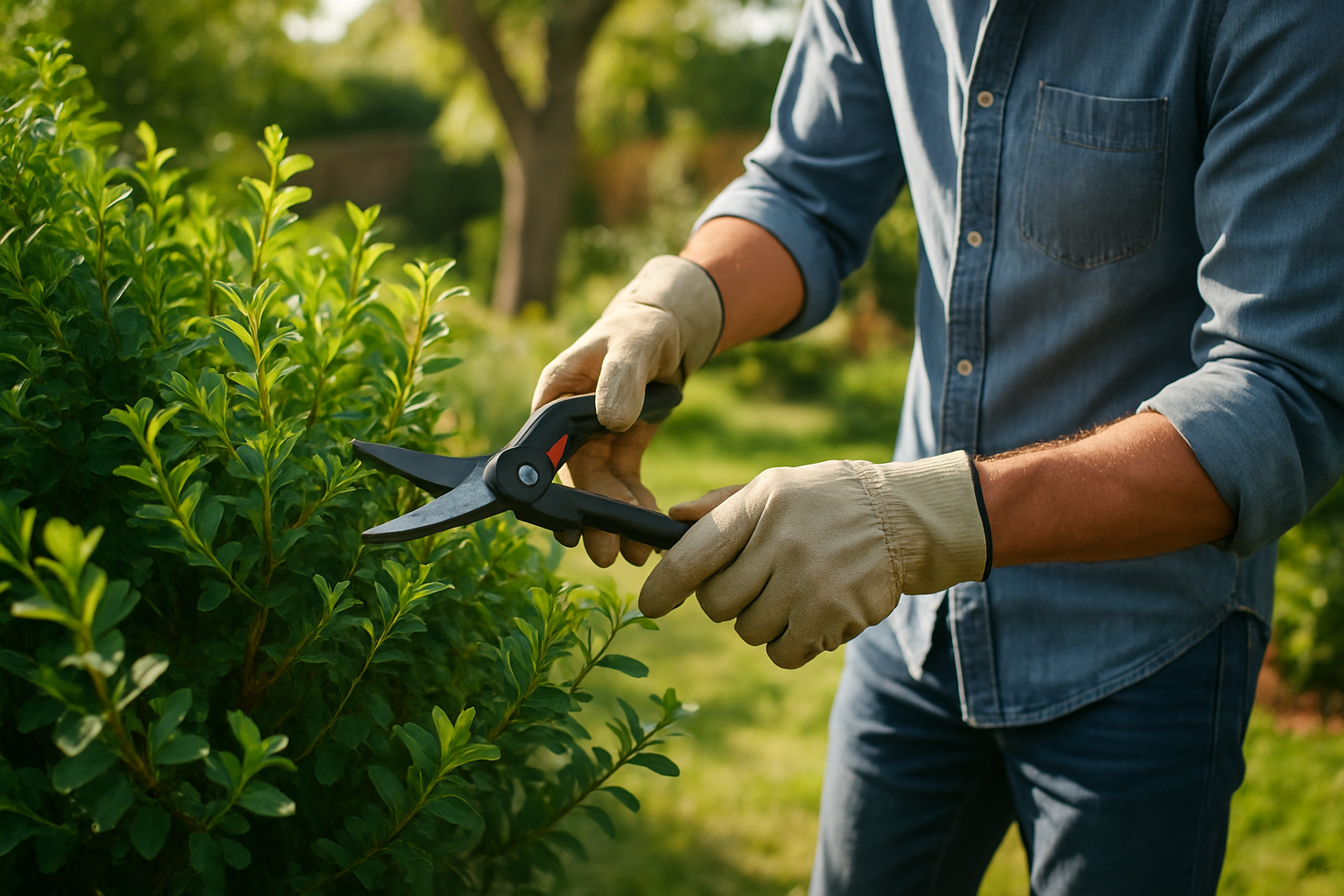
Pruning is often overlooked in indoor plant care, but it's one of the most powerful techniques for maintaining plant health and enhancing aesthetic appeal. Beyond simply removing dead or damaged foliage, strategic pruning shapes growth patterns, encourages bushier development, and can even rejuvenate struggling plants. This guide will explore the art and science of pruning houseplants, providing you with the knowledge to confidently shape your indoor garden.
The Essential Pruning Toolkit
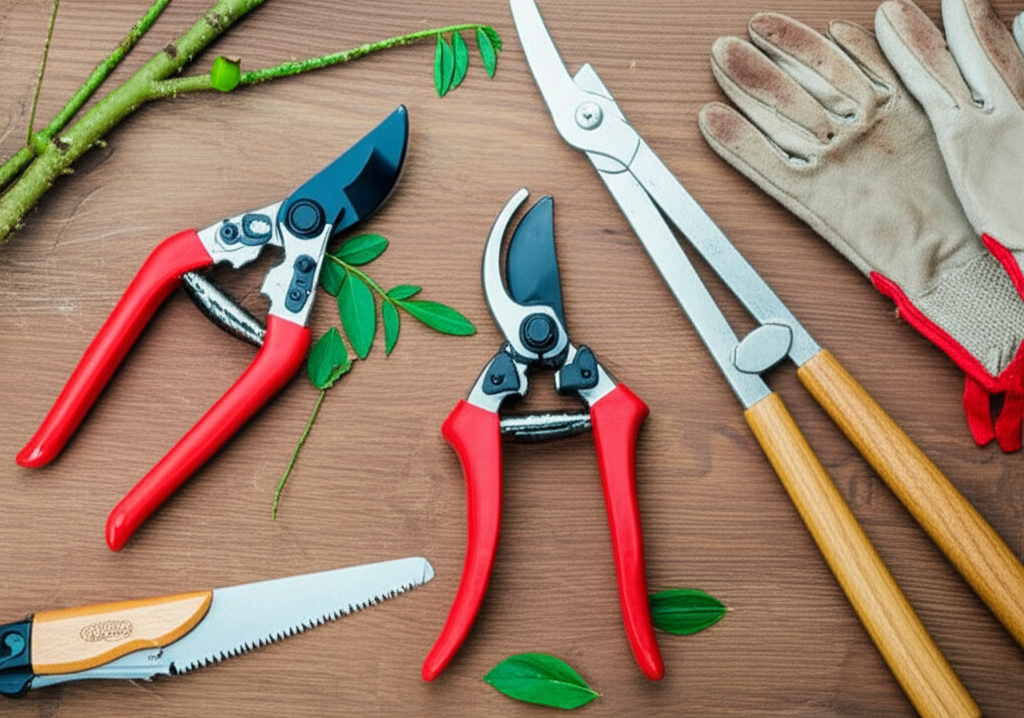
Before diving into pruning techniques, it's important to assemble the right tools. Using proper equipment not only makes the job easier but also ensures clean cuts that heal quickly and minimize stress to your plants.
Basic Pruning Tools
- Precision scissors: For delicate work on thin stems and small plants
- Bypass pruners: For stems up to ½ inch thick, these make clean cuts without crushing plant tissue
- Micro-tip snips: Perfect for getting into tight spaces and making precise cuts on small plants
- Pruning saw: For rare indoor pruning jobs involving woody stems larger than ¾ inch
Maintenance Essentials
- Isopropyl alcohol (70%): For disinfecting tools between plants to prevent disease spread
- Clean cloth or paper towels: For wiping blades clean
- Gardening gloves: To protect your hands, especially when working with plants that have irritating sap
Always ensure your tools are sharp and clean before pruning. Dull blades can crush plant tissue rather than making clean cuts, potentially introducing disease and slowing healing.
Pruning Techniques for Common Houseplants
Different types of houseplants require different pruning approaches. Here's how to handle some of the most common indoor plant categories:
Vining Plants (Pothos, Philodendron, Ivy)
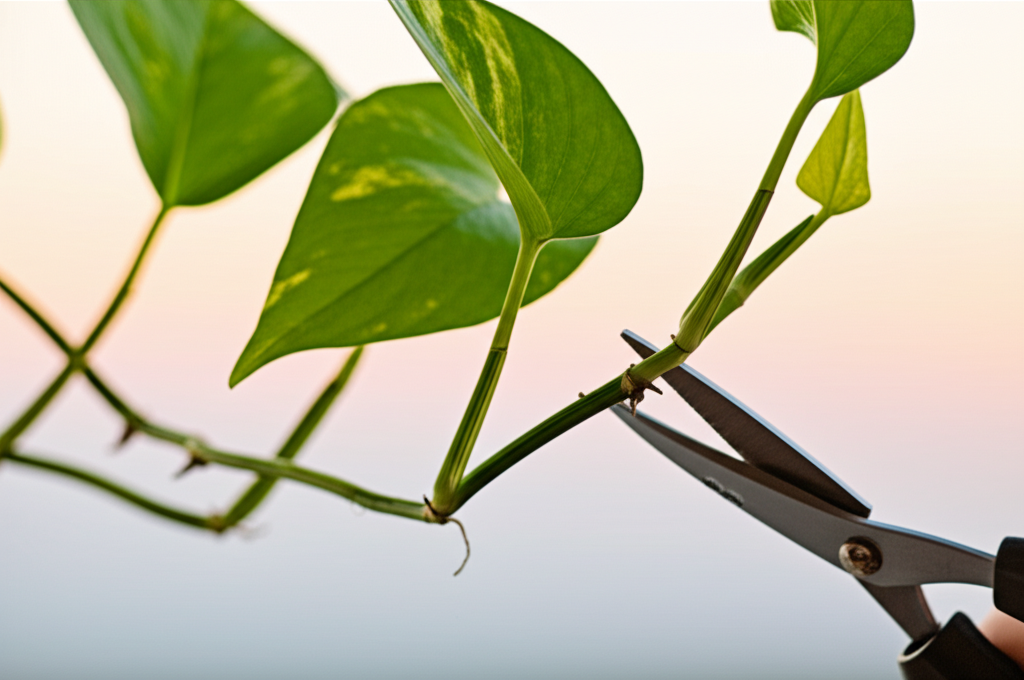
Vining plants benefit greatly from regular pruning to prevent them from becoming leggy and to encourage fuller growth.
- Pinching: For young plants, simply pinch off the growing tip with your fingernails to encourage branching
- Cutting back: For established vines, cut stems just above a leaf node (the point where a leaf attaches to the stem)
- Selective pruning: Remove any long, bare stems to encourage the plant to fill out
- Propagation opportunity: Save the cuttings to propagate new plants in water or soil
For trailing plants in hanging baskets, periodic trimming of the longest vines not only creates a fuller appearance but also prevents the plant from becoming too heavy on one side.
Upright Foliage Plants (Dracaena, Dieffenbachia, Rubber Plant)
These plants often develop a tree-like form and may become too tall or lose lower leaves over time.
- Height control: Cut the main stem at the desired height, making the cut just above a node
- Branching: Cutting the main stem will usually cause the plant to branch at that point
- Rejuvenation: For plants that have become leggy with bare stems, consider a more dramatic cutback—many of these plants can be cut back severely and will regrow from the remaining stem
When pruning thicker stems that contain sap, allow the cut to dry and callus before watering to prevent rot.
Bushy Plants (African Violets, Begonias, Coleus)
These plants benefit from regular, light pruning to maintain their shape and encourage dense growth.
- Deadheading: Remove spent flowers to encourage more blooming and prevent energy waste
- Shaping: Trim back any stems that extend beyond the desired plant shape
- Thinning: Remove some inner growth if the plant becomes too dense, which improves air circulation and reduces disease risk
Succulents and Cacti
These plants generally require minimal pruning, but occasional maintenance helps maintain their appearance.
- Removing offsets: Many succulents produce "pups" or offsets that can be removed to control size or propagate new plants
- Pruning for shape: Some succulents like jade plants can be pruned to create a more tree-like form
- Removing dead or damaged parts: Always remove any dead, discolored, or damaged sections
Allow cut surfaces on succulents to dry and callus over (usually 1-3 days) before watering to prevent rot.
Seasonal Pruning Calendar
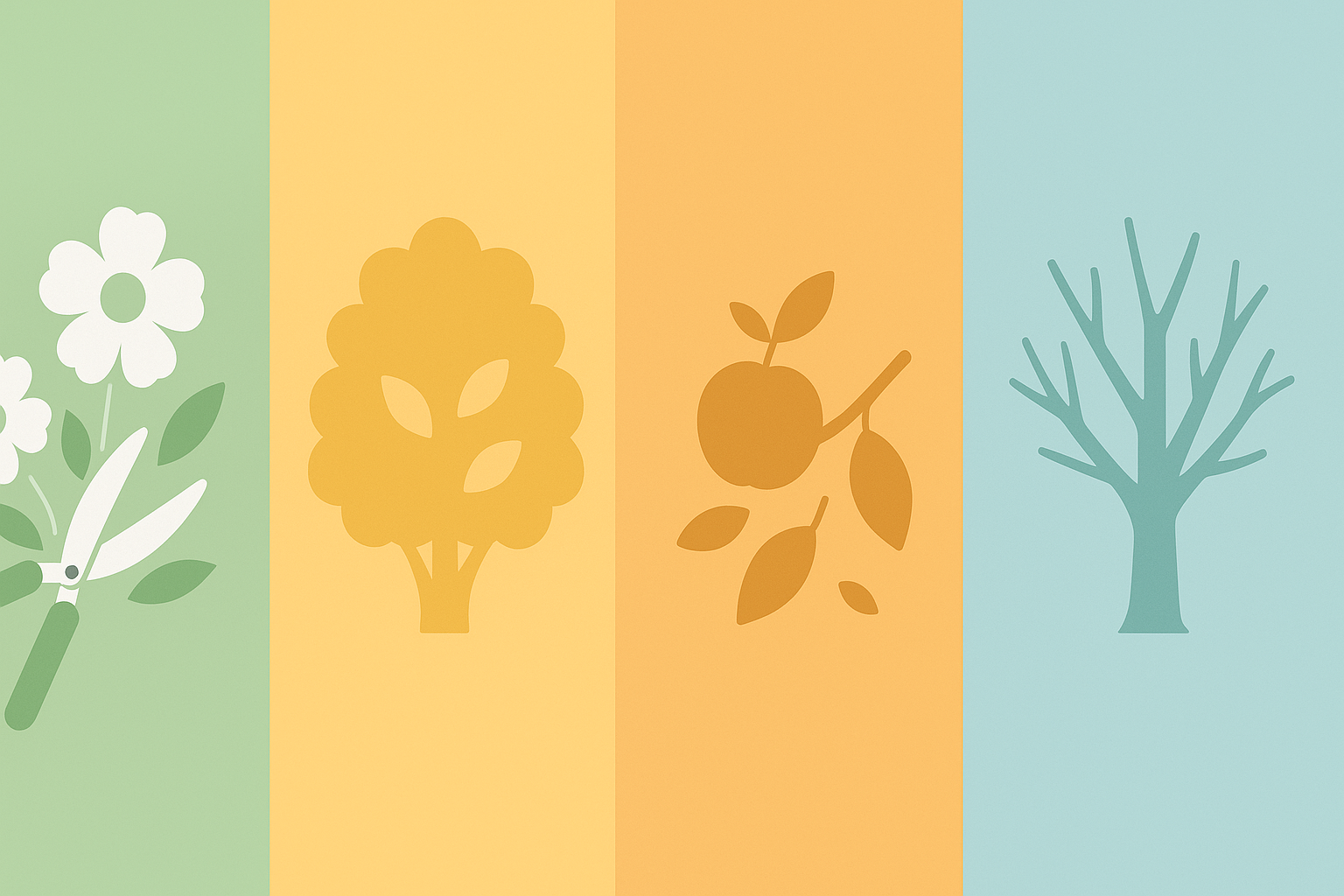
While indoor plants aren't as strictly seasonal as outdoor gardens, there are optimal times for pruning different types of houseplants:
Spring (March-May)
- Best for: Major pruning of most foliage plants as they enter active growth
- Focus on: Removing winter damage, shaping plants before the growing season, dividing overcrowded plants
Summer (June-August)
- Best for: Light maintenance pruning, pinching back growth to encourage bushiness
- Focus on: Deadheading flowering plants, trimming vines that are growing too long
Fall (September-November)
- Best for: Light pruning to shape plants before winter, removing summer damage
- Focus on: Cleaning up plants before they enter slower winter growth, removing diseased portions
Winter (December-February)
- Best for: Minimal pruning, primarily maintenance and removal of dead material
- Focus on: Houseplants are generally in a resting phase, so limit pruning to necessary maintenance
- Exception: Plants that bloom in winter or early spring should be pruned after flowering
Advanced Pruning Techniques
Once you've mastered basic pruning, these advanced techniques can help you shape plants more creatively and solve specific growth issues:
Training and Staking
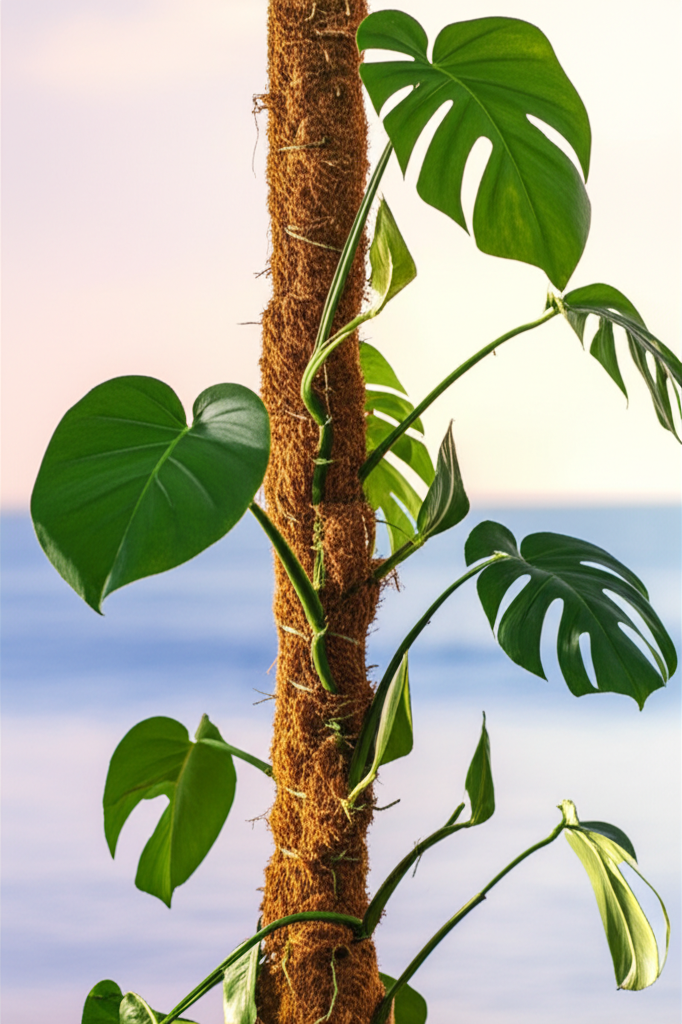
Combining pruning with support structures can create dramatic plant forms:
- Moss poles: For climbing plants like Monstera and Philodendron, prune to encourage growth toward a moss pole
- Espalier: Train plants to grow flat against a support by selectively pruning growth that extends outward
- Topiary: Create geometric or animal shapes through regular, precise pruning
Air Layering
This technique combines pruning with propagation and is useful for:
- Reducing the height of tall houseplants while creating a new plant from the top section
- Propagating plants that are difficult to root from simple cuttings
- Creating a fuller plant by encouraging roots to form on a stem that will eventually be cut and planted in the same pot
Notching
For plants that have become leggy with growth only at the top:
- Make small notches in the bark just above dormant buds on the main stem
- This interrupts the flow of plant hormones that suppress lateral bud growth
- The dormant buds below the notch will often activate and produce new branches
Common Pruning Mistakes to Avoid
Even with the best intentions, pruning can go wrong. Here are some common mistakes and how to avoid them:
- Pruning at the wrong time: While indoor plants are more forgiving than outdoor ones, avoid major pruning when plants are dormant or stressed
- Removing too much at once: Never remove more than 25-30% of a plant's foliage in a single pruning session
- Making jagged cuts: Always use sharp tools to make clean cuts that heal quickly
- Cutting in the wrong location: Make cuts just above nodes or growth points, not in the middle of stems
- Ignoring plant-specific needs: Research your specific plant variety before pruning, as some have unique requirements
Post-Pruning Care
After pruning, plants need some special attention to recover properly:
- Reduce watering slightly: A pruned plant has less foliage and therefore needs less water initially
- Hold off on fertilizing: Wait 2-4 weeks after significant pruning before fertilizing to avoid stressing the plant
- Provide ideal conditions: Place the plant in its preferred light conditions to encourage healthy new growth
- Monitor for new growth: Watch for signs of new growth, which indicates successful recovery
Conclusion
Pruning is both a science and an art—a powerful tool that transforms leggy, overgrown plants into shapely, vibrant specimens. With the right techniques and tools, you can direct your plants' growth, encourage fuller development, and maintain the health and beauty of your indoor garden.
Remember that most houseplants are forgiving, and even pruning mistakes are rarely fatal. Start with small, conservative cuts as you build confidence, and soon you'll be shaping your indoor jungle with the skilled hand of a plant artist.
Regular maintenance pruning, combined with proper watering, lighting, and feeding, forms the foundation of exceptional plant care. Master these skills, and your houseplants will reward you with lush growth, improved health, and striking beauty for years to come.
